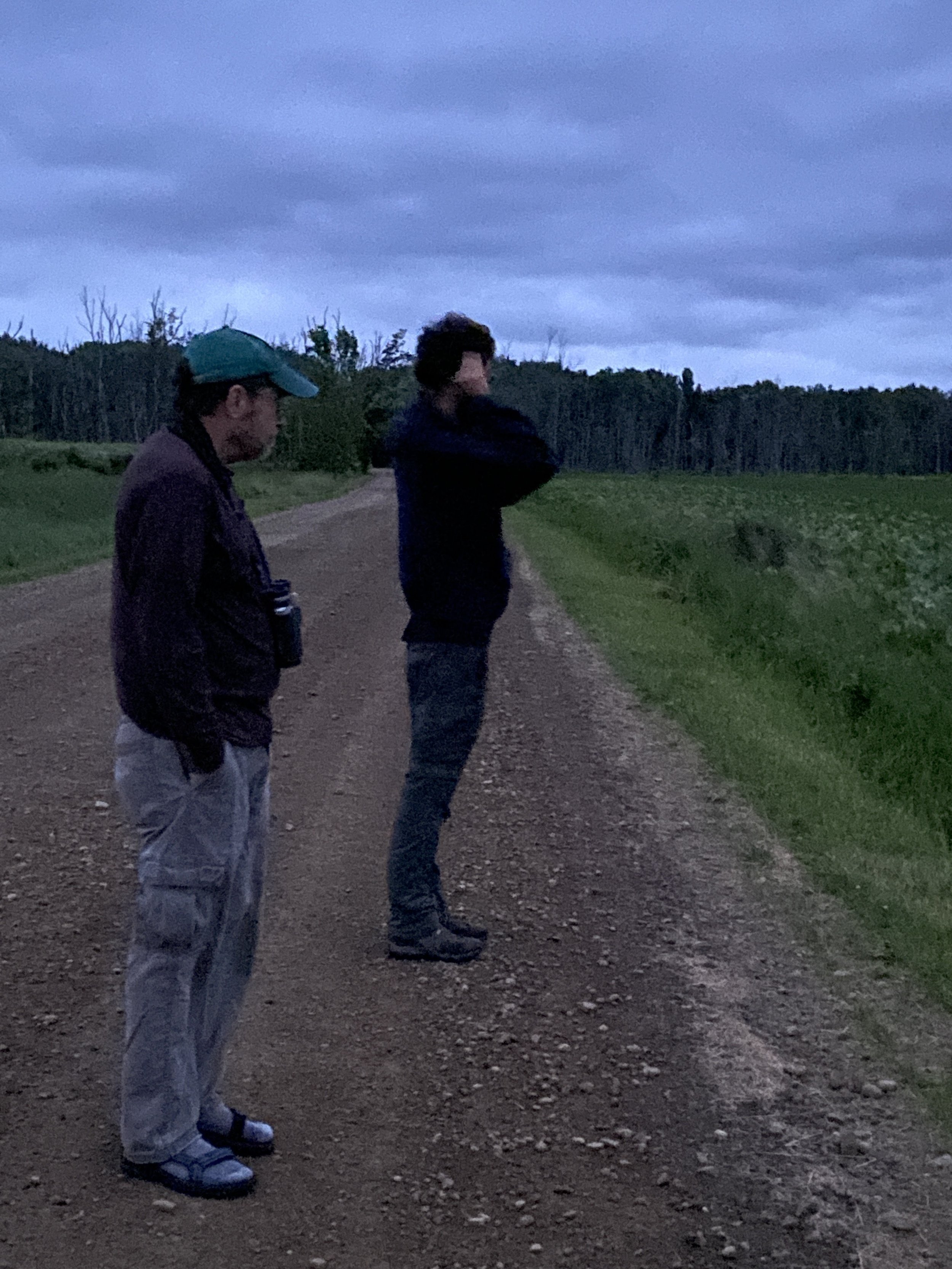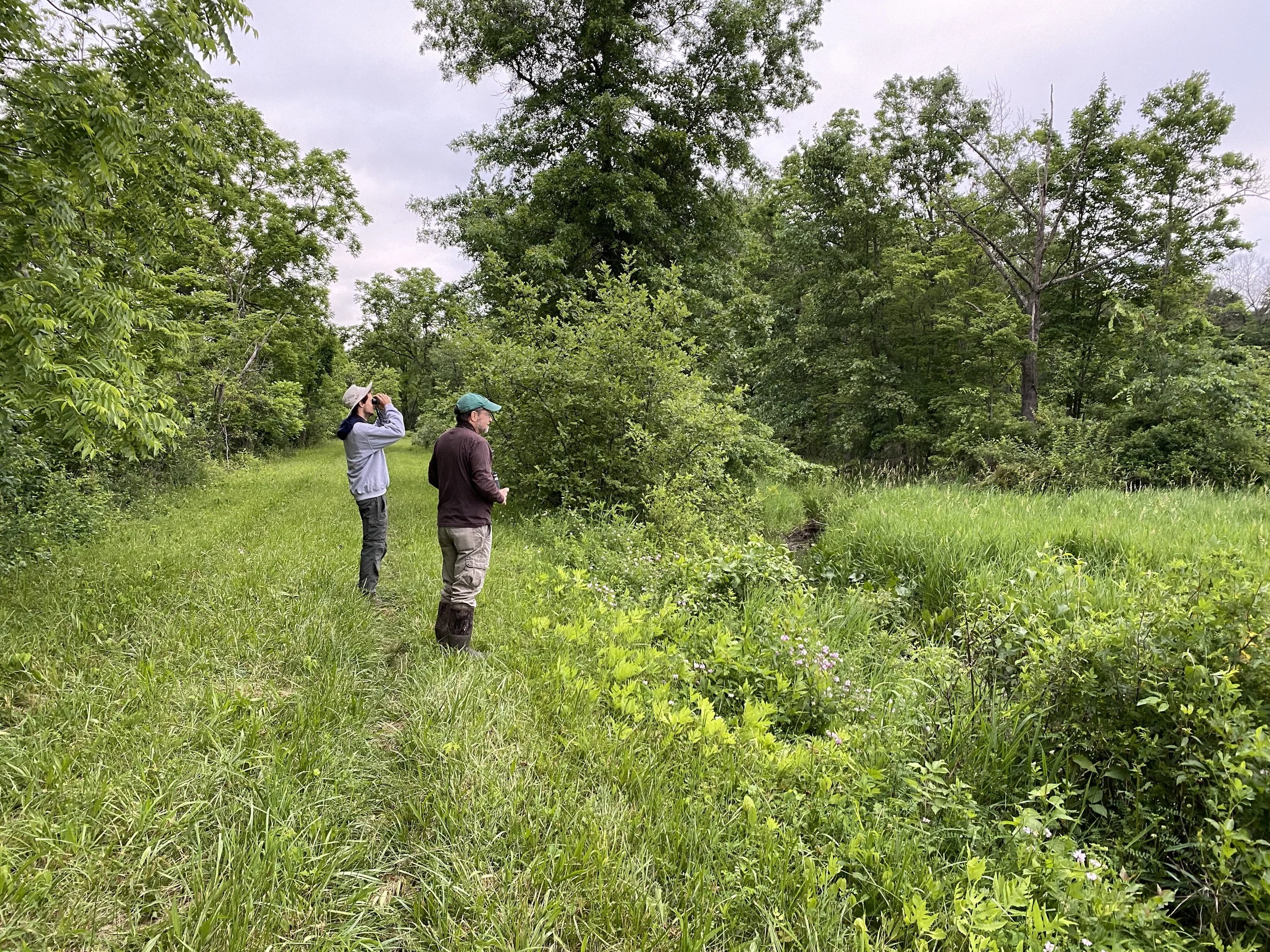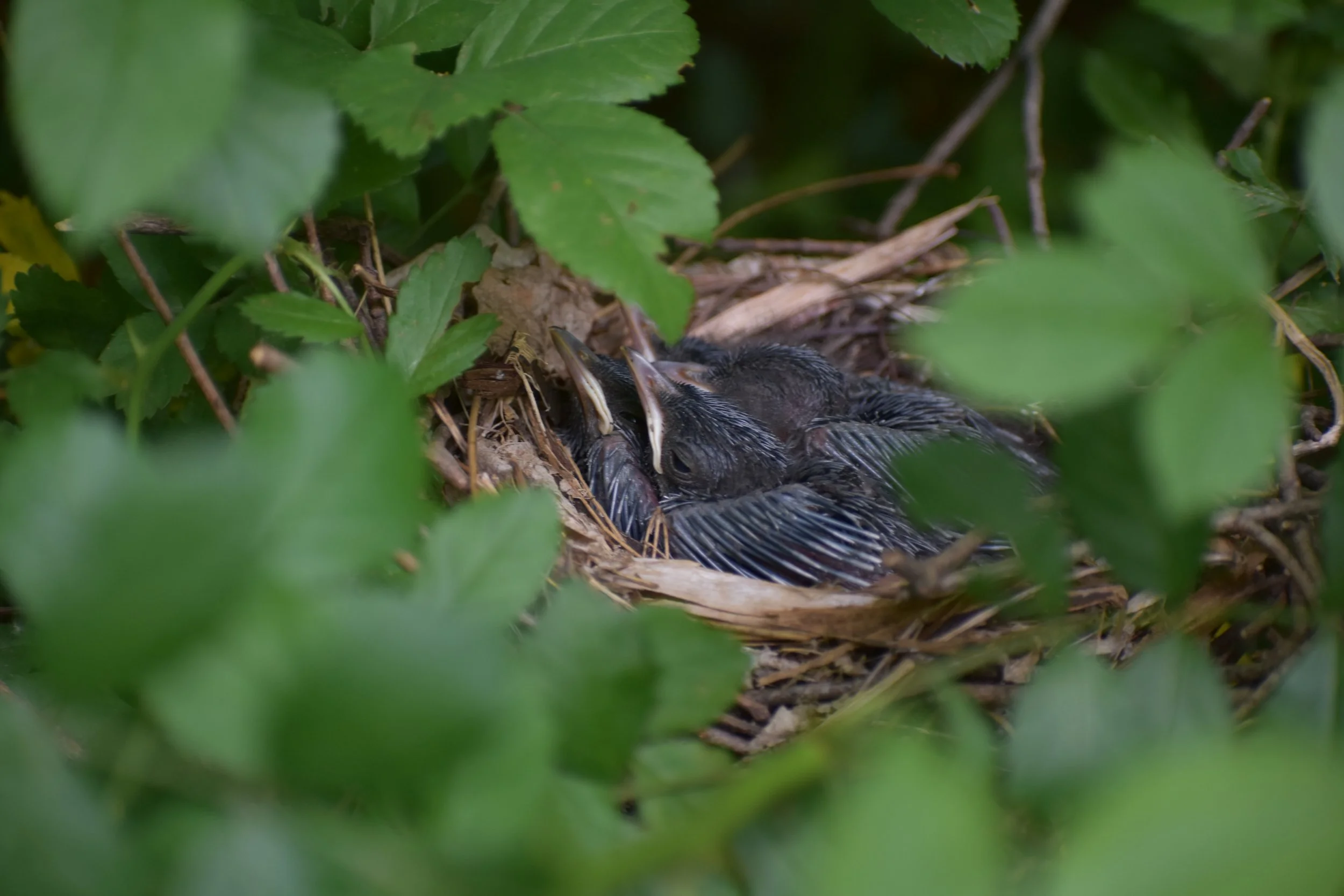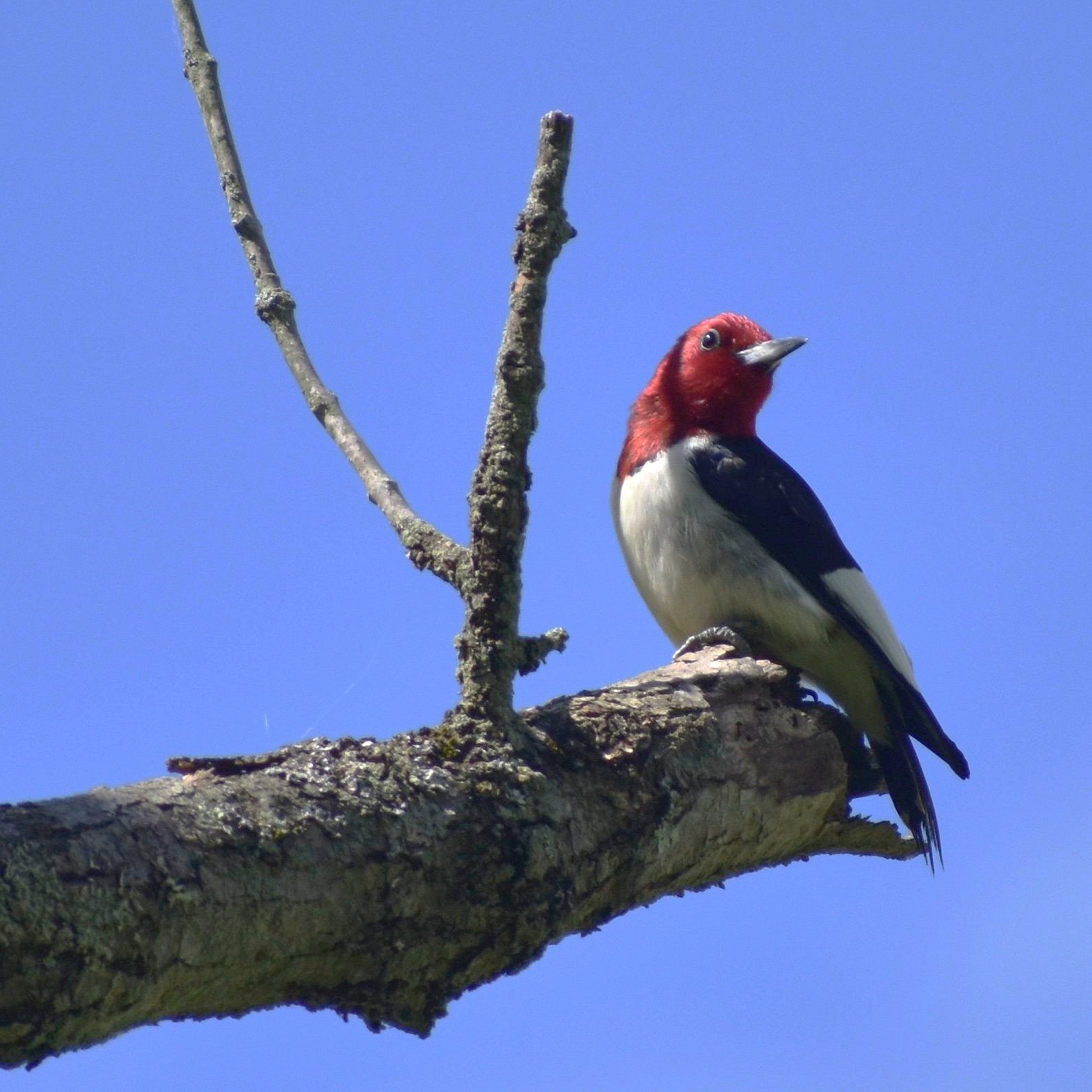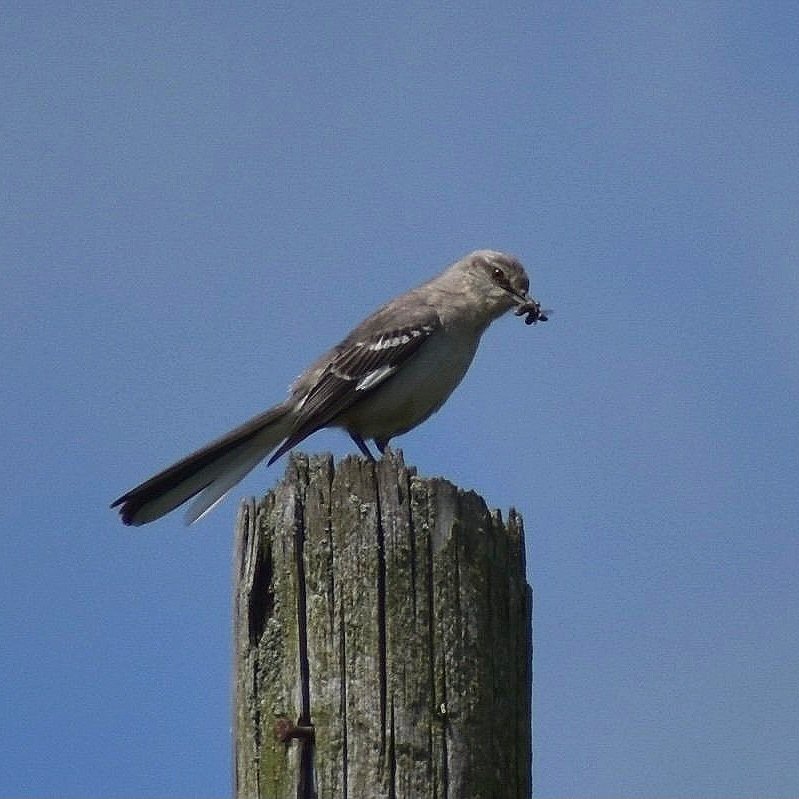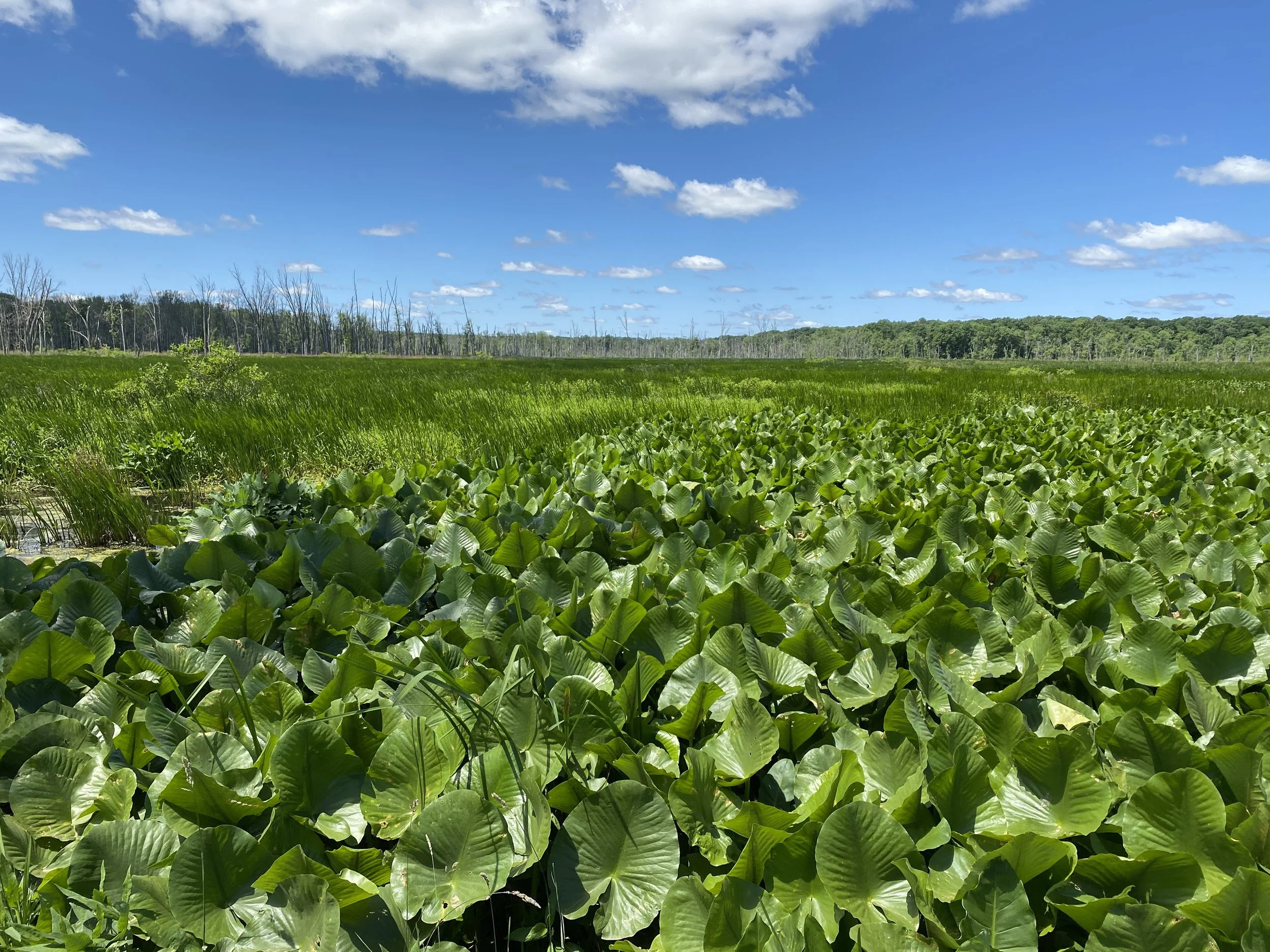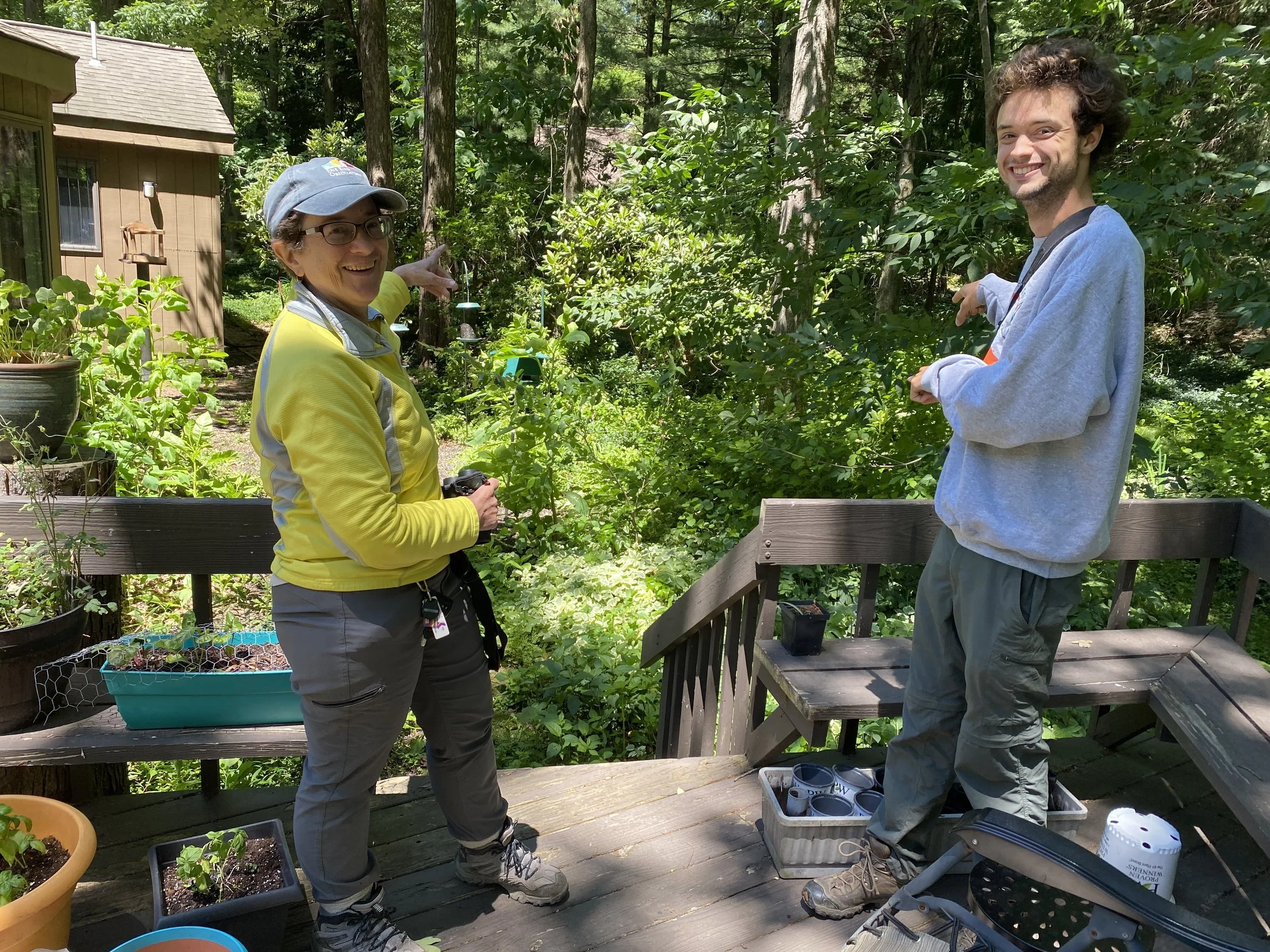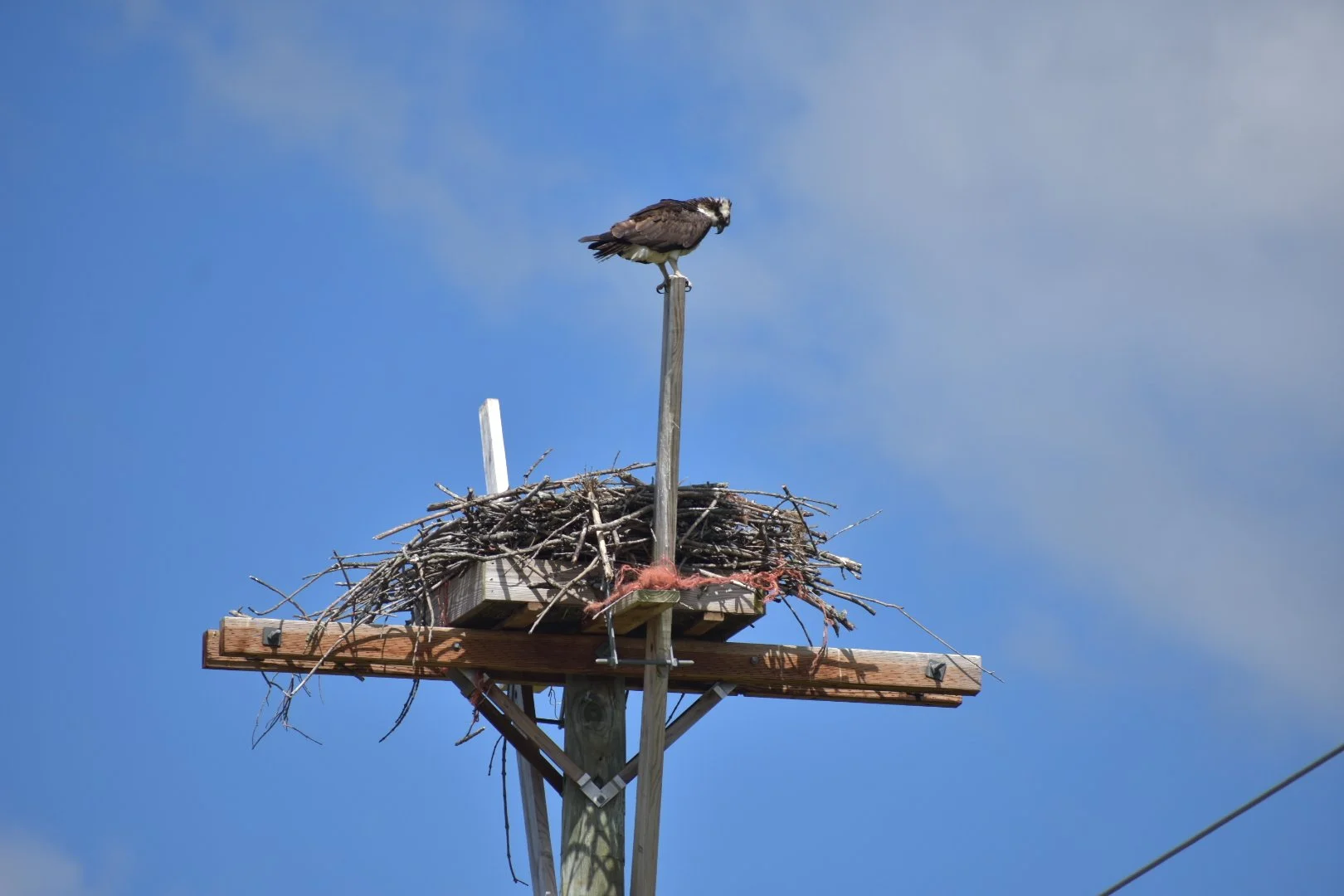Over the weekend of June 17th - 20th, 2022, the Pennsylvania Society for Ornithology held its second annual PA Breeding Bird Blitz for Conservation. During the blitz (B4C), teams of birders across the state compete to find the most bird species in the county of their choosing during any given 24-hour period. In addition to being a fun competition, the B4C generates valuable information on the abundance and distribution of Pennsylvanian breeding birds as well as raises money for avian conservation organizations across the state. This year’s donations will be evenly divided between the Ned Smith Center for Nature and Art, the Willistown Conservation Trust, and our very own Erie Bird Observatory!
Donations will be accepted through July 15th, 2022. For more information, please go to: https://www.breedingbirdblitz.org/donate-teams
Due to his experience competing in New Jersey Audubon’s World Series of Birding as well as his all-around birding prowess, Erie Bird Observatory (EBO) asked Joshua Heiser to lead our team to victory in this year’s blitz. His team, which he named “Pennsylvania is for Plovers” (and insists “plovers” be pronounced like “lovers” 😉) birded Crawford County on Saturday, June 18th, 2022 and Erie County on Sunday, June 19th, 2022. The following is part 1 of a two part series detailing EBO’s experience competing in this year’s blitz. We hope that you enjoy!
Pennsylvania is for Plovers’ 2022 Breeding Bird Blitz
Day 1: The Crawford Contingent
by Joshua Heiser, 2022 EBO Intern
At 4:30 a.m. on June 18th, 2022, the Crawford County contingent of Pennsylvania is for Plovers (#pa4plovers) assembled in an upper parking lot of Allegheny College in Meadville, Pennsylvania. Joining me were Dr. Sarah Sargent, Executive Director of EBO, and Dr. Ron Mumme, a professor in Allegheny’s biology department. Last year, the “Crawford Creepers” team set a new record with 82 species. However, we all felt strongly that we could top their total and 100 species was set as our goal. I had spent the past several weeks gathering information, calculating routes, and scouting sites— we were now ready to locate as many bird species as possible in Crawford County.
Our first spot was McMichael-Brown Hill Rd., a minimally traversed line of asphalt that cuts through Conneaut Marsh, one of the few strongholds for marsh birds in northwestern PA. Although other access points around the marsh exist, scouting trips to this location had suggested it was reliable for several of our target birds - Sora, Common Gallinule, Virginia Rail, and Least Bittern. These species are all notoriously difficult to locate, but we knew that if we were to stand any chance in locating them, we would need to head out in the pre-dawn hours when they are most vocal.
We arrived at McMichael-Brown Hill at 5:03 a.m., just early enough to pick up the nocturnal species that generally quiet down at dawn. Ron and I tried to quickly call in some owls— I with my Screech-Owl whistle, he with his Barred Owl bark— but sadly no owls wanted to communicate with us. Needing to make the most of our limited night-time hours, we pulled further into the marsh. Light was just hitting the eastern horizon by now and the songbirds were starting to sing. We nabbed Marsh Wren and Swamp Sparrow fairly quickly— not surprising for species only found, as their names would suggest, in wetland habitats like these. The more secretive marshbirds were proving difficult though. Ron heard a Common Gallinule whinnying off in the distance, but you need two people to count a bird, and Sarah and I both missed it. The bird did not call again. After a lot of clapping (rails will vocalize in response to loud noises), we finally got a Virginia Rail to grunt. By now, everything was fully visible and songbirds were singing everywhere. In addition to the more common species, we were able to pick up Prothonotary Warbler, a golden swamp denizen at the edge of its range in northwestern PA, and a singing Brown Creeper, a camouflaged tree climber that’s never a guarantee on any big day. We did a quick check in the woods on the way out for a reported Cerulean Warbler (no luck) and then were were off to our next destination!
Pymatuning State Park and the adjacent Hartstown Marsh is one massive complex comprised of marsh, lake, forest, and grassland habitats in western Crawford County and where we would be spending the rest of our morning. It is also where I had spent a considerable amount time last summer conducting bird surveys for my job. Despite feeling confident in my knowledge of this area, I knew I was still mostly relying on year-old information. Our first stop at Pymatuning was a defunct canal-turned-trail just off of Rt. 285. I had observed Yellow-billed Cuckoos and other scrub species there the previous June, and Least Bittern and Common Gallinule had been reported there recently. We arrived around 6:10 a.m., having picked up Hooded Warbler, House Sparrow, and Green Heron along the way. Unfortunately, none of the previously mentioned target species decided to show along the trail, but we did add Hairy Woodpecker, Indigo Bunting, and Scarlet Tanager to our list. After appreciating the acoustic variability of a particularly vocal American Redstart, we were ready to move on.
Driving a couple miles west, we reached Wilson Rd. in the middle of the Pymatuning Wildlife Management Area (WMA). This spot features some of the best grassland habitat in the county and is one of the few places in the state where Upland Sandpipers breed. We stepped out of the car and were immediately met by 15 mph winds, which is not good for detecting the faint songs of many grassland species. Standing in the parking lot, we were able to visually confirm four Sandhill Cranes foraging in a distant field and soaring above us, a family group of four American Kestrels (not always an easy bird to nail down on a big day!). I scanned the road ahead of us and saw a plump, brown bird with long legs take off from one of the telephone wires. “Well, there goes an Upland,” I said to Ron and Sarah, who were both looking in the opposite direction. Ron and I decided to walk up the road in hopes of relocating the sandpiper, while Sarah would meet us with the car at the other end. Along the way, Ron and I added Bobolink, Eastern Meadowlark, Savannah Sparrow, and, best of all, a Grasshopper Sparrow, which is an unreliable bird in this part of Pennsylvania. With Sarah now back with us, we all saw a golden-brown bird with a liquid call drop down into a field east of us. “Upland Sandpiper!” I shouted. We all tried to spot the sandpiper in the grass when suddenly, the bird took off again flying right towards us! Facing into the wind, the sandpiper hovered in the air 30 feet from us and then re-alighted on the telephone wire for some stellar views. Definitely a highlight of the trip!
With all the expected grassland species under our belt, we drove to Fries Access Rd, a secluded dirt road that passes through a nice hemlock grove en route to a boat launch on the Pymatuning Reservoir. In the past, I had Golden-crowned Kinglets, Winter Wrens, Red-breasted Nuthatches, as well as various warblers along this road, and so I was hoping a few of these species would also be around this season. When we got out of the car, we realized the wind was still an issue. Over the noise, we still managed to pick out Yellow-bellied Sapsucker, Blackburnian Warbler, and Blue-headed Vireo— but the Golden-crowned Kinglets and Winter Wrens that were ubiquitous the previous year were nowhere to be found. After a few minutes of listening, we also added Red-breasted Nuthatch (a really good bird for the county) to our list. I had spots in mind for most of the other species out east, but kinglets were hard to find anywhere. I knew of one other location where I had reliably found kinglets in the past, but when we drove out there, we found the road to the Tuttle Campground closed for construction. So, sadly, no kinglets for us. Oh well.
Driving back east, we hit the Pymatuning Spillway, a popular and somewhat disturbing tourist attraction where visitors feed white bread to the writhing mass of carp, Mallards, and Canada Geese in the lake. We ticked Mallard and Canada Goose immediately upon arrival, as well as Ring-billed Gull, Cliff Swallow and Purple Martin. A few rafts of Ruddy Ducks had spent the summer on the reservoir the previous year, but none were visible that day. A walk across the street yielded Double-crested Cormorant and a swing by the Pymatuning Fish Hatchery nabbed us Killdeer and Red-tailed Hawk, but overall nothing incredibly unexpected. We had been hoping the White Pelican that had turned up there during the 2021 blitz would return, but it appears our invite must have gotten lost in the mail. That being said, as we were driving out of the Fish Hatchery parking lot, I did a quick tally of our species list so far— 75 species! Not too shabby for 8:30 in the morning!
We headed south again, this time to Teakettle Rd., an unpaved road that cut through a different section of the Pymatuning WMA. A slow drive with the windows down netted a few species we hadn’t encountered yet: Barn Swallow, Acadian Flycatcher, and Cedar Waxwing. We parked and dashed into the woods, hoping for a Purple Finch and crossing all of our fingers for a Golden-crowned Kinglet— but, still, the odds were not in our favor. We did have a singing Yellow-throated Vireo as a consolation prize and found a Gray Catbird nest with four adorably goofy little nuggets in it. As we were leaving, a Brown Thrasher apparently decided to tempt fate by flying directly in front of our car. Perhaps it, too, was lamenting the lack of kinglets that morning. Either way, it was a nice species to add to our list. We stopped for a moment to enjoy the displaying Bobolinks and the colony of Cliff Swallows nesting under the WMA’s maintenance buildings and then we were once again on our way.
We then entered what was probably the slowest point of our day. Now 9:30 a.m., the dawn chorus had died down, most of the common species were under our belts, and rarer species were not turning up where I had them the year prior. We took a 20-minute detour to hike a trail off of a service road where I previously had singing Dickcissel, Horned Lark, and Orchard Oriole— but Field Sparrow was the only new species we picked up. We cut further south to South Canal Rd. where Cerulean Warblers had been on territory in 2021, but dipped on those as well. Our luck finally started picking back up when we visited the expansive marsh just east of Hartstown. We didn’t find any Common Gallinules (our primary target), but Ospreys were visible on their nest as was a resting American Black Duck, a rare and reclusive breeder in the county, and a nice consolation prize for the other birds we had missed.
Contrasting with the previous few hours, my knowledge of the Pymatuning region came in clutch on the next leg of our journey. From Hartstown Marsh, we cut west across acres of farmland to the eastern shore of Pymatuning Lake and then down a one-lane residential street where I had a nesting pair of Red-headed Woodpeckers the year prior. We hadn’t even driven a quarter of the way down the road before we saw the white wing-flash of a Red-headed Woodpecker landing on a tree in front of us. Score! And just as we stepped out of the car, Ron and I saw a Northern Rough-winged Swallow dart past— another target bird I had observed at that location the previous year. With both targets accounted for, we continued south to the Snodgrass boat ramp, where I reliably had seen Pine Warblers. We stopped the car with the windows rolled down at a promising patch of conifers, and within 5 seconds, we heard a Pine Warbler’s liquid trill. Two for two! Continuing south along the eastern lakeshore, we walked to a small wetland where I previously had Orchard Orioles and Belted Kingfisher. Neither of those species were present, but we did add a House Wren and Carolina Wren, the latter being nice to get out of the way as it is more of a southerly species with a spotty distribution in Crawford county.
My final Pymatuning stakeout location was a spot for Northern Mockingbird, a common bird in most regions, but exceedingly rare in northwestern Pennsylvania. In fact, when I told Ron and Sarah our target species, both of them were shocked mockingbirds could even be found in the county. When we arrived, the site seemed different than I remembered. There was an additional house, more trees, and no mockingbird, plus several people outside in the garage and garden. After awkwardly staring at the property for a couple minutes, Sarah got out to introduce our team to the homeowners, while I decided to go hunt down the mockingbird. It was then that I realized why things looked so strange— we were about 50 feet off from the actual spot. Doh! Just as a I remembered, there was Mister Northern Mockingbird singing and flycatching his heart out. I called Sarah and Ron over to introduce them to my old mimid buddy when another mockingbird flew into a nearby bush— not only that, but this one was carrying insects in its bill! A quick investigation revealed a nest with three hungry baby mockingbirds! We stood there for a moment, completely enthralled by the sight of these dutiful parents supplying grub to their young, and relishing the fact we found what may well be the only breeding pair of Northern Mockingbirds in Crawford County!
Leaving Pymatuning, we headed back towards Conneaut Marsh. I felt retracing our steps might net us a few missing marshbirds, and Sarah had a spot in mind for Cerulean Warblers that we could hit along the way. By 12:15 p.m., we were back again at McMichael-Brown Hill Rd., where our day had begun. Ron and I were scanning the marsh for the smallest sign of movement or the faintest peep, when suddenly, a tiny, sand-colored heron with a green-black back and an orange face flew right across the road. “Least Bittern!” I cried. We were super lucky to get this insanely secretive marsh bird on our list— and out in the open too! Unfortunately, the bittern turned out to be our only lucky find on our re-visit to the Conneaut area. No new species were added at any of our other Conneaut Marsh stops either, and our third time looking for Ceruleans was still not the charm. But at 90 species so far, we were still on course to break our target of 100 species for the day.
It was now time to head back to Meadville for our midday break. Ron had a mandolin gig that evening that he needed to get ready for, and Sarah and I were not opposed to a food and bathroom stop. Plus, we knew of a couple of species we could pick up in their neighborhood. We added a Red-shouldered Hawk nestling about to fledge and a Dark-eyed Junco we found foraging in someone’s lawn. We still needed House Finch though and we knew they were regular visitors to Ron and Sarah’s bird feeders. Of course, it took 30 minutes for the House Finches to finally show up, but the break was sorely needed, and by 2:30 p.m., the now 2-person Pennsylvania is for Plovers team was back on the road!
Our first stop post-break was Woodcock Lake near Saegertown. We still needed Belted Kingfisher and figured the lake would be a good place to find one. We parked at two different overlooks, scanned nearly the entire lake, even crashed a wedding party (!!), but all the kingfishers were apparently too busy fishing elsewhere. We then headed towards Kightlinger Rd, where a rare Henslow’s Sparrow was supposedly on territory. We had nice views of French Creek on the drive and while scanning the banks for our absentee kingfisher, I spotted a white duck with a green head in the middle of the river. “Common Merganser!” I shouted. “I see it!” Sarah replied while speeding past at 40 mph. The Henslow’s Sparrow spot yielded no Henslow’s Sparrow, but we did flush a Wild Turkey while making a U-turn, so it wasn’t a total loss.
We now drove east to Hemlock Hill, a private forest where Ron conducts his research on Hooded Warblers. Lacking any sort of trail, Hemlock Hill is laid out in a grid system, with trees every 50 meters bearing an east-west number and a north-south letter. Though he couldn’t join us, Ron had sent us the exact grid coordinates for several Hemlock Hill species we still needed, including Winter Wren, Louisiana Waterthrush, Mourning Warbler, and Black-throated Blue Warbler. We picked up Blue-winged Warbler right in front of the car where we parked, and then bushwhacked into the woods to V-26 for our Black-throated Blue Warbler. The woods were silent on our way there, but once we reached the specified grid marker, I heard a buzzy “beer beer beer beer bee!,” almost as if on cue. Unfortunately, the warbler was too distant for Sarah to make out, so I walked us closer in the song’s direction. It took a good ten minutes to finally track the bird down, but at last Sarah heard the Black-throated Blue Warbler sing. All of our other potential species lay even further in the woods, but since we were on a tight schedule, we navigated our way back to the car.
From Hemlock Hill, we headed a few miles south to SGL 146 where I had found a Prairie Warbler on territory a few days prior. As they are a very rare breeder in the county, I was crossing my fingers we’d be able to find one on the big day. I had previously needed to use playback to confirm it, which is something not allowed during the blitz, and so there was a small concern that it might not be singing when we arrived. Fortunately, as soon as I stepped out of the car, I heard its familiar rising buzzy song. And after waiting a few minutes, the Prairie Warbler began to sing again— this time close enough for the both of us to hear it. Species 97! A few miles down the road, we checked a small pond on a hunch and were rewarded with a family of Hooded Mergansers, bringing us to 98!
It was now 5:30 p.m., and we still needed two more species to hit our target number of 100 birds for the day. Thankfully, there were several new birds we could pick up out east. SGA 69 yielded no Purple Finches nor Alder Flycatchers, but we heard a Hermit Thrush exactly where I had him a few days earlier. One away! With only a few hours of daylight left, we booked it to SGA 122, a large tract of forest filled with several eastern Crawford specialties. I had several Magnolia and Black-throated Green Warblers singing right in the parking lot there a few days prior, but when we arrived, everything was quiet. We listened for several minutes and then hiked a trail to find some Broad-winged Hawks I had seen while scouting, but the raptors were absent as well. So close to 100 species, but still so far.
We walked back dejectedly to the car and were about to drive off when suddenly I heard a song that sounded like a cross between a Hooded Warbler and an American Redstart. “Magnolia Warbler!” I cried. We had 100! And now the birds started rolling in. Just down the road, we heard the distinctive “zoo zee zoo zoo zee” of a Black-throated Green Warbler, and then we picked up a Winter Wren’s ethereal, tinkling warble. We missed Northern Waterthrush where I had scouted them, but a Canada Warbler was loudly singing right where I had him the previous evening. With some time to kill, we visited a little wetland across the street, and right where we parked, I heard some interesting chipping outside the window. “I think that’s a Northern Waterthrush!” I said. A quick peek into the woods confirmed species #104.
It was now 8:00 p.m. Daylight was fading fast. We decided to head straight to our last stop, Titusville, where historically Common Nighthawks have bred (although none had been reported in the last two years). We stopped at the Sheetz in town for a much-needed bathroom break and some sustenance. Just as Sarah stepped out with our food, we heard the buzzy “peernt!” of a Common Nighthawk, and saw a lone bird flying erratically a few hundred feet away above the rooftops. Sarah and I plopped down on a picnic bench with our Sheetz burgers and fries, exhausted and elated. I perused our list one more time and laughed, realizing I had forgotten to add the Red-breasted Nuthatch back at Fries Landing.
Over the course of 17 hours, we had found 106 SPECIES in Crawford County!!— SIX MORE than our target number!— AND we set a new state record for June!
What a day! And to think that in just a few hours, we would be doing it all again- this time in Erie County. We left feeling exhausted yet also excited, eager to discover what a day blitzing Erie County would bring.
Be sure to stay tuned for part#2 of this blog series!
